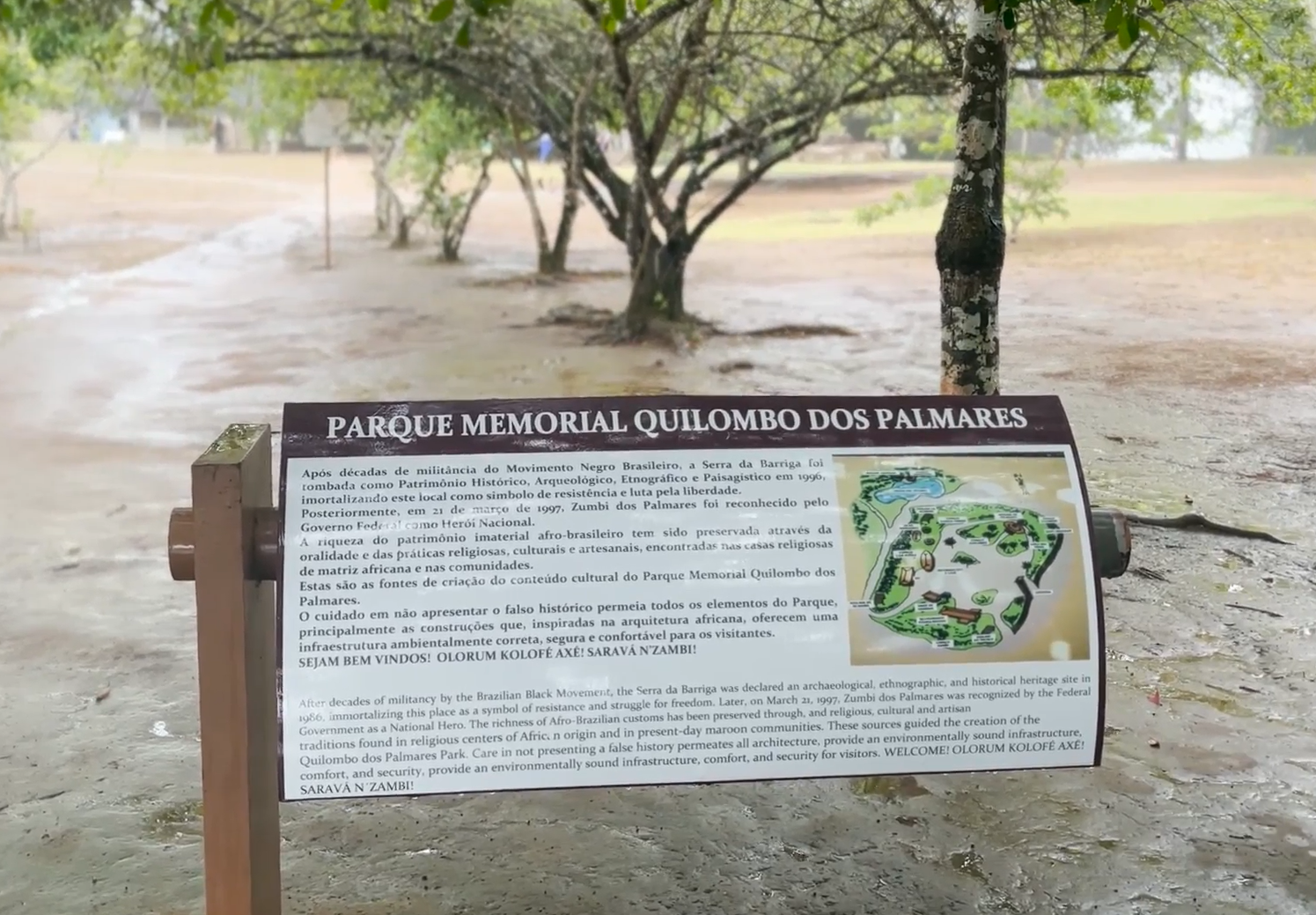Clique aqui para Português
This video report pays a visit to Quilombo dos Palmares (1605-1695), the greatest symbol of Black resistance in Brazilian history, and its significance for the representation of Black Brazilian people, who have historically been denied knowledge of their roots. The Quilombo dos Palmares Memorial Park can and should be visited year round. We invite you on a virtual visit to Palmares to commemorate Afro-Latin and Caribbean women on their day, July 25. This report was originally published in Portuguese on the 135th anniversary of the Abolition of Slavery in Brazil—a marker that historically covers over centuries of struggle by Africans and Afro-Brazilians, instead celebrating a regent princess. On May 13, 1888, Black Brazilians were granted formal freedom following 388 years of enslavement and resistance.
We must constantly reaffirm that it was not Princess Isabel but rather Palmares and its seeds that abolished slavery in Brazil. Even after the proclamation of the Lei Áurea, or Golden Law, that officially banned slavery, structural racism, coupled with the denial of housing rights, dignified work, adequate income, environmental and climate justice, and so on, meant that quilombos and similar communities continued being necessary spaces for the Black population. Today, favelas are contemporary quilombos, fundamental spaces of freedom for Black people that are not mediated by the State. They are spaces for realizing the right to life and self-organization by residents faced with government neglect. Favelas are sites of cultural effervescence and predominantly Black populations. It is essential to look at Palmares from the viewpoint of the favelas. According to the Akan people in what is today Ghana, it is not taboo to return and recover what was left behind. It is, rather, necessary in order to move forward. As such, visiting Palmares in 2023 is Sankofa: “San” (go back, return), “Ko” (to go), and “Fa” (look, search, fetch).

A lot of people don’t know that there is a memorial to the struggle of Africans and Afro-Brazilians on the site of what was the epicenter of Quilombo dos Palmares. As a Black woman from the urban periphery, born and raised in the Baixada Fluminense, it has always been a dream of mine to be able to visit that place. I felt the need to be there and experience this ancestral territory. As an African in the diaspora, I don’t know which part of Africa my ancestors were kidnapped from, but I knew that in Alagoas in the Northeast of Brazil, I could start to reconnect with my ancestry.
On my last birthday I decided to realize this wish by visiting Quilombo dos Palmares. I left the periphery of Rio de Janeiro and went to Maceió, capital of Alagoas state. From there, we drove for an hour and a half heading toward Serra da Barriga in the municipality of União dos Palmares. During the whole visit to the Palmares site, I relied on Thais Patrícia Paulino da Silva, better known as Dandara Thais, an Afro-indigenous community guide born and raised in the region. She has become known by the nickname Dandara, the name of a great Black heroine of Palmares and wife of Zumbi dos Palmares, for her in-depth knowledge of the area.
First, I went to the two museums located within the Federal University of Alagoas (UFAL) where I saw local artwork made by descendants of the Quilombo do Muquém, one of the remaining quilombo communities recognized by the Palmares Cultural Foundation in Alagoas. Afterward I climbed the Serra da Barriga to where the epicenter of the Quilombo dos Palmares was located in the 17th century, guided by Dandara. Upon arriving at the archeological site, Dandara saluted our ancestors and started to tell a bit more of our history.
Being there is indescribable. Tears ran down my face many times. There’s a lot of emotion in knowing where we came from, because I do believe that part of me came from there. After visiting the quilombo, we went on to Muquém to visit the artisans selling pieces which start from R$10 (US$2). If you have the opportunity, visit and learn more about Quilombo dos Palmares. It’s not just part of Afro-Brazilian history, but also an important part of the history of Brazil and the African diaspora.
Watch the Video Report Here.
About the author: Tássia di Carvalho has a degree in Journalism, Publicity and Advertising and works in the areas of entrepreneurship, social impact, and racial equality. In 2016, she created marketing agency Agência Is after leaving her role as a columnist and reporter for newspaper O Dia where she covered the positive aspects of favelas and peripheries.
About the video editor: Raphael Kepler was born in Madureira and is a video and podcast editor, musician, and music producer. Raphael currently works with agencies as an editor and with independent artists on music production.

